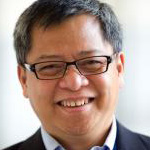
Part 2: Hillary and Donald: American politics into the abyss?
In 1955, VO Key wrote the piece, "A Theory of Critical Elections", to describe a groundbreaking shift in party politics and policy-making. Walter Dean Burnham then built on this classic by one of the best scholars of politics of the American South, coming up with the term "critical realignment" to elaborate further on how elections profoundly alter the substance and direction of the American polity.
Critical realignment often begins when a set of major issues lead to the emergence of a new group of voters who would join a political party but upend the usual way it does politics. These rising constituencies can also become the mass base of a new third party which would challenge the "traditional" rivals, and in the process, bring about political polarization. The flashpoint for all these shifts would be the election of a president who now could introduce fundamental changes in governance.
Political scientists point to 5 elections where critical realignment took place, power changed hands, and once-dominant parties were nearly undone. In 1800, Thomas Jefferson and the Democratic-Republican Party defeated the Federalist Party of Alexander Hamilton, ending the fierce debate over where power and authority should lie – the federal government or the individual states?
This was followed in 1828 when southern politician Andrew Jackson broke up the Democratic-Republican Party in a strange alliance with New Yorker Martin Van Buren. During this election, the Whigs appeared on the political scene to challenge Jackson.
The most severe critical realignment, however, came with the election of Abraham Lincoln in 1860 and the ascendance of the Republican Party. Lincoln's abolition of slavery prompted the southern states to declare independence, leading in turn to the Civil War – the bloodiest domestic violence that still scars the American soul to this very day.
Scholars still disagree whether the 1896 victory of William McKinley was a critical election. Those who believe it point to the transformation of electoral campaigning with the coming in of funds by business lobby groups that allowed McKinley to defeat William Jennings Bryan. Others just saw this as inevitable changes in party politics as the Republican and Democratic parties consolidated their respective national machineries.
Finally, there was the Great Depression and the New Deal when Franklin Roosevelt presided over the remarkable expansion of the organizational structure and powers of the federal government, especially over social welfare.
In the next decades, political scientists and pundits debated whether the elections of John Kennedy, Ronald Reagan, and Bill Clinton represented critical realignments. All 4 supposedly represented major shifts in voting preferences and also the forging of new coalitions.
Kennedy, the first Catholic president, won power by compromising with the powerful Lyndon Johnson who represented the Southern wing of the Democratic Party, while Rockefeller Democrats joined small government advocates, and anti-abortion groups to elect Reagan. Finally, after a series defeat by candidates representing the party's liberal wing (McGovern, Dukakis) and flaming out of the Carter presidency, Bill Clinton and the "New Democrats" expropriated the Republicans' economic issues (from free trade to the reduction of social welfare support) while keeping some of the Democratic Party's social issues (pro-choice, racial equality) to win back the White House.
Moreover, if Reagan was the heir of Nixon's Southern strategy, Obama was supposed to be the legatee of Clinton's long years of triangulating politics and policy.

In their book Politics by Other Means, Benjamin Ginsberg and Martin Shefter, however, posited this powerful and controversial argument that American democracy has been eroded by political leaders resorting to "non-democratic" mechanisms to hold on to power, or to overthrow rivals.
Instead of using elections to perpetuate regimes or change them, parties and non-party interest groups have increasingly relied on lawsuits, congressional investigations, and media attacks to attack each other. Judicial activism had also become more pronounced in the middle of the 20th century with justices dipping their fingers into policies that used to be the sole prerogative of Congress and the Presidency.
Ginsberg and Shefter call this the displacement of modern democratic politics by elite "institutional combat," with rivals engaging in "trench warfare" instead of the ballot to engage each other. Rivals had also turned state institutions into venues for tabloid-type exposés to bring each other down. Smear campaigns and scandals were replacing policy debates in the halls of Congress and even the inner sanctum of the Presidency.
Finally, media had also been instrumental in the decline of political parties. Whereas in the past, party machines were critical in ensuring high voter's participation, and in preserving coalitions at the state or federal levels, television, the telephone had enabled candidates to go over their political party's head and reach out directly to targeted voters.
The outcomes have considerably eroded American democracy. The once vibrant party machine politics has been gradually replaced by "a post-electoral order" that looks more like the factional infighting of the Bolshevik and Chinese communist parties. Since the political war had moved out of the popular arena, voters "are given little reason to participate," and since Watergate, voting turnout had been declining.
Advertisements and the poll surveys had personalized politics, and voters now looked at the name first and party affiliation only second, while candidates no longer see the need to rely on the machines to get out the vote.
It was the further entrenchment of this "post-electoral order" that spawned a Donald Trump and turned the 2016 election into a tabloid war. (To be continued)– Rappler.com
Patricio N. Abinales' second major was American politics. He took the classes of Ginsberg and Shefter in graduate school.